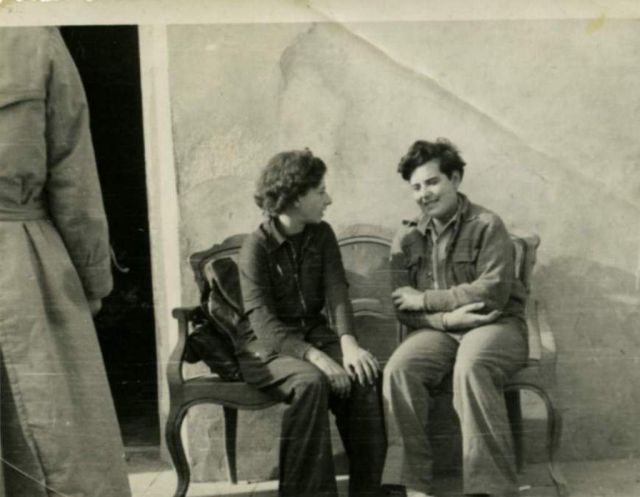
Ink In Her Veins: The Troubled Life of Aileen Palmer
Sylvia Martin
University of Western Australia Publishing, 2016
328 pages
In 1939, a young Australian woman grabbed the international headlines when she threw red paint onto the doorsteps of 10 Downing Street, whilst distributing leaflets hidden in copies of the Ladies Home Journal.
The action by Aileen Palmer was to protest the blood that then-British prime minister Neville Chamberlain had on his hands for selling out Spain and Czechoslovakia to European fascism.
Palmer was fined five shillings for her dissent, but worse was to come for her rebellious ways, the University of Tasmania’s Sylvia Martin reveals in her biography of the anti-fascist, communist, poet and lesbian.
The daughter of prominent, left-wing Australian literature figures, Vance and Nettie Palmer, Aileen joined the Communist Party of Australia in the early 1930s, spurred by the Depression-era economic crisis, fascism and war.
Palmer was in Barcelona as a translator for the upcoming “People’s Olympics”, organised by Spain’s left-wing Popular Front government to counter the forthcoming Nazi Olympics in Berlin in 1936, when the fascists’ assault in Spain abruptly cancelled the proletarian games.
Joining the volunteer International Brigades as an interpreter for the British Medical Aid Unit, Palmer put her political convictions, linguistic skills (fluent Spanish, French, German) and youthful drive at the service of the Spanish Republic against the Franco/Hitler/Mussolini military attack.
The up-close pain and death that came to her with each lorry-load of bodies was a harsh initiation into adulthood for the teenage Palmer. Between savage offensives, however, time dragged and tempers frayed in the personality-chafing, close proximity of her medical team.
Class tensions (working class ambulance mechanics versus Cambridge-trained doctors) and political tensions (Communist versus non-Communist volunteers) exacerbated the difficulties. Yet Palmer always regarded Spain as the political highlight of her life.
Although her return to Australia after World War II saw Palmer continue her political and literary activism (against nuclear weapons and the Vietnam War), she was increasingly blighted by mental health problems.
Post-traumatic stress disorder from her war experience (“the unbearable noise within” her head, as a sympathetic poet put it) combined with bipolar disorder to create manic-depressive mood-swings and psychotic episodes.
This pot was kept brewing by the “tangled web of the Palmer family’s emotional dynamics”. Palmer felt “submerged resentment” towards her parents, who under-valued their daughter’s chosen art form of the poem.
To compound her distress, Palmer’s lesbianism remained clandestine, deemed by contemporary social mores “to be sick or unnatural”. This made her sexuality feel distasteful even to herself.
Palmer’s “shock treatments” (including electro-convulsive therapy) involved harrowing convulsions, coma and memory loss. They often made her mental state worse rather than better.
Palmer died in 1988 in a psychiatric nursing home, aged 73. There were no obituaries or tributes. Martin’s book puts this to rights for Aileen Palmer, socialist and “poet of conscience”.